CAPTAINS, MATES AND WIDOWS
Sag Harbor’s whaling captains were the oil barons and high-risk hedge fund moguls of their day.
During the industry’s peak years from 1829 to 1847, they reigned as unrivaled financial, cultural, and political potentates.Their high-seas adventures, the exploits of their shipmates, and the travails of their widows are variously documented in books and monographs, but many of their stories are lost to the mists of time. Herewith are brief biographies of the actual historical figures and the contemporary stand-ins portrayed in this Tour.
'Captains, Mates, and Widows' was a show by Sabina Streeter at the Sag Harbor Whaling Museum in the Summers of 2014 and 2015. The works and text tell the stories of several figures from the prime of the whaling years in the village. Some of these figures are better known than others, but they all have their stories of life in Sag Harbor at that time. The artist used her imagination, historical records, and present day models to capture the spirit of that time.
We sincerely thank Ms. Streeter for sharing her work for this Tour.
Please note: This Tour is unique in that it is a Gallery and not a walking tour. All of these figures have their place in the rich history of Sag Harbor and many of their names appear in other tours.
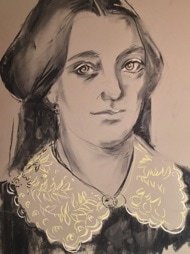
Mary Brewster (1822-1878) was born Mary L. Burtch. In 1841, six months after her eighteenth birthday, she married William Brewster. Just three months after their marriage, on July 1st, 1841, William embarked on his first voyage as captain in command of the vessel Philetus. In the first two years of their marriage, the newlyweds spent only about five months together. It was the prospect of another long separation that prompted Mary to embark on her husband’s next voyage to sea. Overcoming both family opposition and public disapproval, she made two long voyages with her husband aboard the whaleship Tiger, and then remained ashore until her husband’s retirement in 1856.
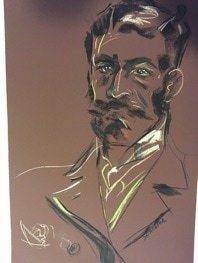
Born in 1836 in Sag Harbor, Captain Aaron Cuffee (1836-1901) was a member of the Montaukett tribe, and a resident of the ethnically diverse Eastville community, which consisted ofAfrican Americans, Native Americans, and Europeans living together. His father, Lewis Cuffee, was a member of the Eastville Band and co-founder of the St. David’s AME Zion Church in Sag Harbor in 1841. Captain Aaron Cuffee crewed on numerous whaling expeditions from Sag Harbor, including voyages aboard the E. Corning and the William Tell. On July 12th 1859, the William Tell expedition ended in a tragic shipwreck off the coast of Siberia. After his safe return to Sag Harbor from the Artic, Cuffee became the Captain of his own ferryboat, providing passage between Sag Harbor and New London. He and his wife, Mary G. Cuffee, eventually moved to Shelter Island. Aaron Cufee died in 1901. (Research courtesy of Donnamarie Barnes, East Ville Community Heritage House
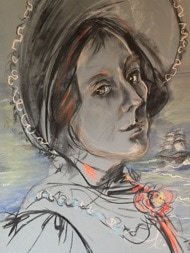
Emeline Winters (1819-1904) was born 1819 to Sydney and Cynthia Hallock. In 1838 she married Captain Jonas Winters, who was the master of a whaling ship. She sailed from Sag Harbor to the Sandwich Islands on a ship named Elizabeth Frith. Her second child, Clarence Madison, was born in Honolulu, HI. In 1852 she took her two children Clarence and Addia and sailed from Sag Harbor to join her husband on St. Helena on his return from a long cruise. Aside from these few trips to sea, she spent the majority of her 85 years in her beloved Sag Harbor attending to her six children, four of whom reached maturity. She was known as a devoted wife and mother. She died in 1904. (Sag Harbor Express, March 17, 1904)

Dr. John Smith Sage (1791-1882) was born in East Hampton, NY in 1791 to Dr. Ebenezer Sage of Chatham, CT and Ruth Smith of South Hampton, NY. His father, Dr. Ebenezer, was an educated and well-respected man who graduated from Yale University in 1788. Anna Mulford writes that John Sage “did not remember the time when he could not read or write…”, and that “…he inherited sterling qualities of integrity, prudence, and intelligence.” (Chapter II, A Sketch of Dr. John Smith Sage of Sag-Harbor, N.Y., 1897). He was an inventor, mathematician, eccentric, intellectual wonder, and confidant to many. He lived his life in the service of his community, and was often used as a mediator in local town disputes regarding financial and legal issues. When shareholders from whaling “company ships” would quarrel, he would intervene and straighten all of the accounts, always refusing payment for his assistance. (Sleight, 1930, Sag Harbor in the Early Days, p.261)
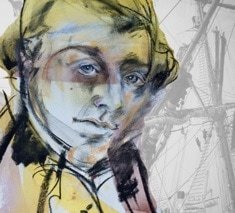
Captain William J. Rysam (1737-1809) was born in 1737 and is believed to have originally come from Wales, England.He made his way to America as a sailor and eventually became captain of his own ship. He married a New Englander, Ursula Pierce, and they soon established their home in Norfolk, Virginia. While in Virginia, he operated as a tramp trader dealing in tar, lumber, hides, and tobacco. He expanded into ship building and repairing, and participated in the city‘s West Indian trade. His commercial self interest and fondness for America made him a patriot. When the Revolutionary War forced Rysam out of Norfolk in December 1775, he fled with his family to Newtown, New York. In Newtown, his last child was born and his wife died shortly afterwards. In 1778, he sailed to Sag Harbor with his five motherless daughters to enroll them in East Hampton’s Clinton Academy, which he believed offered the best education. He soon established himself as an affluent merchant and master mariner of Sag Harbor who orchestrated numerous dealings in the local economy stretching from salt production to whaling expeditions. He kept a shipyard in Sag Harbor shortly after the termination of the War of Independence. Around 1800, his son-in-law Cornelius Sleight (husband to his daughter Hannah Phrip Rysam) joined him in his business. He was known for his irresistible charm, business savvy, as well as for the change he left in his wake, his interest in education, and his benevolence. Rysam Street was named in his honor; it winds uphill from the protected inner harbor. (Transcript Lecture of Lois Beachy Underhill Nov. 15, 2001)
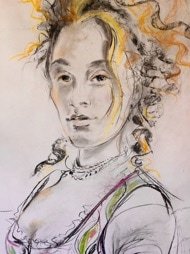
Sister Sailors: “She was a Sister Sailor” wrote Mary Brewster upon meeting another whaling wife at Hawaii in 1846, and indeed, these women were members of a pioneering sorority. In an age when whaling was a major American maritime industry and whale ships combed the distant seas for years at a time in search of their quarry, several hundred women from all over New England defied convention and went to sea with their captain husbands. (Excerpt and biographies taken from: Joan Druett, She was a Sister Sailor: Mary Brewster’s Whaling Journals, 1845-1851)
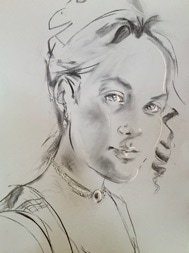
Susannah Sayre Stewart, (Unknown-1791), age 27 (1st Wife of Capt.David Hand) Children: - Clarissa, b.1788, d.1861 - Sarah, married to James Pearson Epitaph: “Hark, my sad, fair guardian chides my stay and waves his golden rod… ‘Angels, I come’ lead on the way and waft me to my God.”
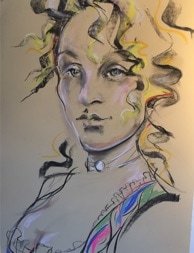
Mary Sayre Stewart, (1794-1816), 2nd Wife of Capt. David Hand Children: - Susan, b.1792, d. 1871, married to Abraham Vail (Built Sabina’s house – Vail House) Epitaph: “The Almighty spoke and she was gone. Eternity now reigns alone. If you would live with God on high learn, o ye living, how to die.”
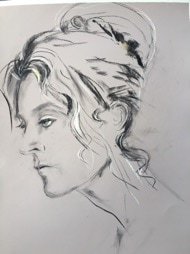
Hannah Miller, d. 1798, age 30 (3rd Wife of Capt.David Hand) Children: Captain Robert Forest b.1797, d.1860, whaling captain Epitaph: “Behold, ye curious, living mortals passing by How thick the partners of one husband lie Vast and unsearchable the ways of God Just, but severe his chastising rod”
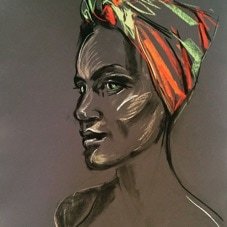
Charlotte Havens, d. 1800, age 30 (4th Wife of Capt.David Hand) Epitaph: “ O Death, King of terrors where’s thy sting. What welcome tidings tomy ears you bring. My faith discovers they dark abode. A seat prepared to the right hand of God.”
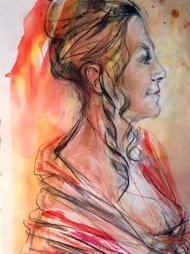
Hannah Sayre, d. 1835, age 69 (5th Wife of Capt. David Hand) Children: - Captain David Hand VII, b. 1805, d.1849, deepsea whaling captain - Hannah, b.1809, d.1834, married to Captain Jeremiah Sayre Epitaph: Not found.
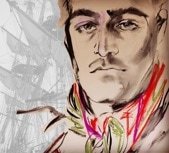
Author James Fennimore Cooper was so taken with these legends that he used the tales of Hand’s exploits as inspiration for his character “Natty Bumpo” in his series of novels known as the Leatherstocking Tales. Following the war, Hand returned to his beloved cottage in Sag Harbor, New York, and began his career as a shore whaler. He lived with his five wives in the cottage now located on Church Street, one of the oldest standing houses in Sag Harbor Village. Mysteriously, his first four wives all died around the age of 30 with no cause of death on record.
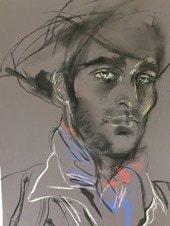
Captain David Hand VI (1759-1804) was a celebrated Revolutionary war hero, successful shore whaling captain, and survivor of five wives. Born in 1759, he was a prisoner of war five times before the age of twenty. Nicknamed “Slippery Dave” for his numerous escapes from British prison-ships, he soon became a notorious and controversial legend. One such legend describes Hand’s escape from a prison ship in Halifax, after which he returned to Sag Harbor on foot across New England in the dead of winter.
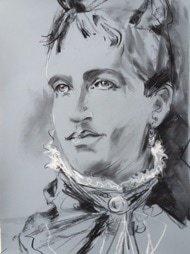
Lucy Vincent Smith (1838 – unknown) first went to sea in 1869 after ten years of marriage. Strong-willed, industrious, and pious, she was well suited to a life on the ocean. She aimed at bringing her Christian faith to those she met in distant lands, and was said to be a calm and mediating force on board. She sailed a second time in 1882 aboard the Abraham Barker.
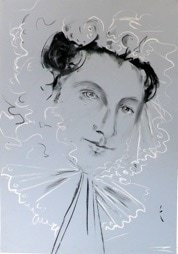
Phoebe Smith (dates unknown) was a Jane Doe of the mid-19th Century. Aside from her name, which may well have been an alias, and an unsigned oil portrait of mysterious provenance, we know almost nothing about her. Like sister whaling capitals Nantucket and New Bedford, Sag Harbor abided a seafarer’s paradise of bawdy bars and brothels. Was Phoebe Smith a respectable wife and mother? Or was she something else? We know that she had a face that could launch a thousand ships.Her death was rumored to be a suicide
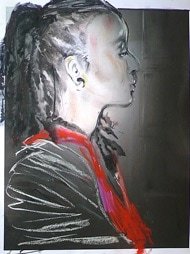
Harpooner's Wife “B” (b. 1949) - The term “widow’s walk” is not merely a figure of speech. It describes a physical location, as well as an emotional trauma common among the wives of whalers. Women married to whalers had to endure extended absences that averaged 24 months and could extend up to five years per voyage. From specially constructed perches atop their family homes, they would scan the distant horizon, hoping to see a sail that signaled their husbands might be coming back alive and in one piece. Barbara Smith, an acclaimed model, actress, author, and restauranteur, expresses in this image the love, longing, and pain experienced by the wife of a harpooner, who is portrayed in this exhibit by her real life husband Dan Gasby.
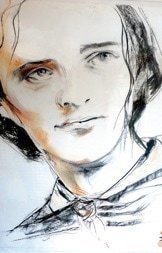
Involuntarily conscripted or callously sold off by their own parents during their early teens, Unknown Cabin Boy (circa1829-1847) were officially the lowest ranking members of the crew. But during the course of a voyage, they might wind up being closer to the captain or the first mate than anyone else on board. They could rise in status because of their loyalty and meritorious performance, or because they submitted to the predatory whims of their superiors. As one young sailor recalled, “There is no class of men in the world who are so unfairly dealt with, so oppressed, so degraded, as the seamen who man the assets engaged in the American whaling industry.”
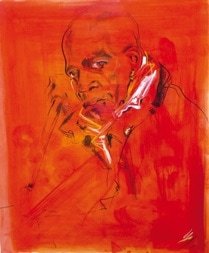
The Great Harpooner 'Dan' (b.1953) - The whaling ships’ sails were white, but many of the hands on deck were black. Although the industry’s rainbow workforce included smatterings of Creoles, Colombians, Native Americans, and Pacific Islanders like the fabled Queequeg in Moby-Dick, no less than 25 percent of the crewmen were African Americans. The harshness of the sailing conditions and the inherit danger of the task were democratizing influences. As one black whaler reported, “A colored man is looked upon as a man, and is promoted in rank according to ability to perform the same duties as the white man.” Brooklyn-born entrepreneur Dan Gasby, a contemporary stand-in, claims to be a reincarnated harpooner, and he has the hard-eyed visage to prove it.
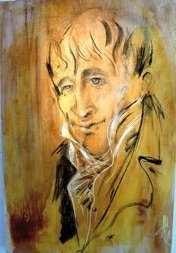
Some historians contend that whalers modeled themselves after privateers, in spirit if not in modus operandi. In contrast to pirates, who plundered ships without regard to flag, privateers operated on behalf of specific countries that issued letters of marque. Captain Enoch Conklin (1760-1815) owned the privateering vessel “Arrow,” which was registered with the United States Navy shortly after the outbreak of the War of 1812. Boasting 80 guns and 120 men, the “Arrow” departed for the Caribbean in 1814. Captain Conklin and his ship were lost at sea in 1815 while attempting to intercept hostile British traffic. His descendant Theodore B. Conklin III owns the American Hotel in Sag Harbor.
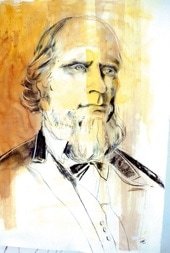
Captain Henry Orlano Loper's (b.1803-d.1888?) fate remains a mystery. The descendant of Dutch immigrants who began whaling on the eastern end of Long Island in the late 1600s, he was the master of at least two deep sea whaling vessels. The “Washington” sailed to the South Atlantic, returning in 1834 with1900 barrels of oil. The "Hamilton” departed Sag Harbor in 1839 bound for the South Seas and the Brazil Banks, only to founder at the mouth of the Rio Grande River in 1849. Albert Jagger, a fellow captain, reported seeing Loper in Wolf Creek, California, during the Gold Rush, but there is no record of what became of him thereafter.

Marie Salliord Roys (Dates unknown) was the second wife of the illustrious Captain Tomas Welcome Roys. They met in her native Lorient, France, in 1860. Roys was 44 years old. Marie’s exact age is not of record, but she was likely more than two decades younger than her husband. Marie bore three children, whom she raised in Sag Harbor alongside the offspring of other whaling captains and their wives. A comely and high spirited femme, Marie finally tired of her husband’s long absences on the high seas, and ran off with one of his former crewman. Her lover was a first mate who reportedly bore a striking resemblance to Julio de Souza.
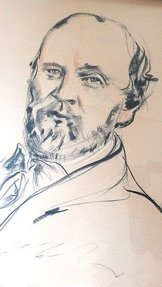
Captain Thomas Welcome Roys (circa 1816-1877) was renowned for his adventurousness and inventive genius. At age 32, he became the first captain to sail north from the Pacific Ocean through the Bering Strait to the Arctic Ocean. He amassed huge quantities of blubber oil on voyages to Iceland, Russia, Ireland, and Africa, reportedly slaying 49 whales on a single expedition while pioneering the harvesting of the rorquals and bowhead species. He played a key role in the development of rocket propelled harpoons, only to blow up his left hand when one of the devices misfired off the coast of Portugal. (Roys’ crew amputated his hand with a razor.) He also suffered excruciating heartbreak on the home front. His first wife died in childbirth in 1847; his second wife ran off with a former first mate in 1872 (see Marie Salliord Roys supra). Roys then meandered out to California, where he contracted yellow fever. He died destitute after being unceremoniously dumped from a ship in Mazatlán, Mexico in 1877.
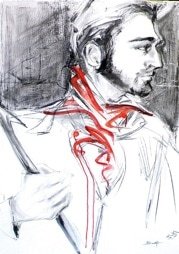
First mates like Julio de Souza (1814-1865) were the second most important men aboard a whaling ship. If the captain was chairman of the board, the first mate was the chief operating officer. He was directly responsible for seeing that the crewmen performed their assigned duties, and for meting out punishment if they did not. But first mates often chafed under their captain’s authoritarian and sometimes misguided command. The mythic first mate in Moby-Dick was based on one Edward C. Starbuck, who was dismissed in Tahiti under mysterious circumstances in the 1830s. The handsome Julio de Souza, born in the Azores to Portuguese parents, personifies the romantic style and voracious ambition of first mates who aspired to become captains themselves.
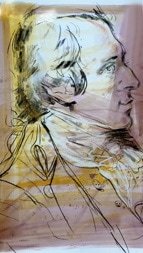
The grandson of Revolutionary War hero, David Hand, Captain David P. Vail (1817-unknown) commanded two historically important whaling ships. One of them was the “Cadmus,” the vessel that transported the Marquis de Lafayette from France on his second visit to the United States in 1830. The other was the “Sabina,” whose legacy lives on with almost eerie namesake resonance in the form of Vail House at 25 Madison Street in Sag Harbor. A two-story building constructed from ship’s timber by Vail’s father Abraham, it is the present day location of artist Sabina Streeter’s studio.
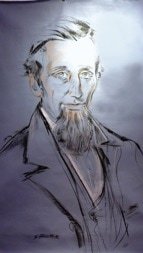
Captain Jonas Winters (1813-1894) lived an iconic whaling life marked by professional triumph and personal tragedy. First shipping out as a common sailor at age 19, he spent twenty-two years at sea, completing eleven voyages varying in length from thirteen months to over two years. By his own account, Winters took part in harvesting 24,500 barrels of whale oil and 24,400 pounds of whalebone. He sired six children with his wife Emeline Hallock, who accompanied him on a voyage to the Arctic Ocean. But Winters also buried two of his brothers in the Pacific Ocean following gruesome accidents aboard ship. The house he built at 61 Hampton Street still stands.
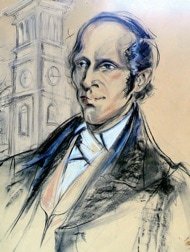
Without Ephraim Niles Byram (1809-1881) the whalers of Sag Harbor might have been hopelessly lost at sea. An astronomer, clockmaker, scientist, and bookbinder, Byram built a pioneering mechanical replica of the solar system called an orrery. He went on to manufacture navigation devices, mainly compasses and chronometers, for more than 70 whaling ships between 1842 and 1866. He also built clocks for the Virginia Military Institute (1852), the U.S. Military Academy at West Point (1857), and the Methodist Church (1838) at the corner of Madison and Sage Streets in Sag Harbor. Methodist Church officials subsequently reported that the time on Byrams' clock varied less than three minutes per year. No wonder that most whalers were ultimately able to find their way home.
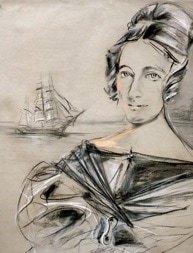
A comely lass born on Shelter Island, Sarah Darling Havens (d.o.b. and d.o.d. unknown) bore two girls and a boy for her husband Captain Wickham Havens. Their son, Frank, was exiled to San Francisco after he set fire to the local library, destroying a thousand books. Frank proceeded to amass a fortune in West Coast real estate. Upon returning to Sag Harbor, he built the mansion that now houses the Cormaria nunnery and indulged his fondness for eastern philosophy.
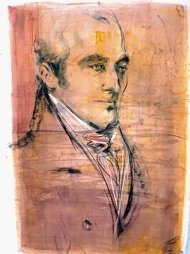
With his finely chiseled jaw, sculpted nose, and jaunty sideburns, Captain Gabriel Havens (1767-1839) is the poster boy image of the brave, courageous, and bold whaling captain. Born in Sag Harbor, he was the son of a Revolutionary War army surgeon who fled to Connecticut to escape invading Redcoats. Following his family’s return to Sag Harbor at war’s end, Havens was commissioned as a merchant marine captain, and given command of the “Nancy” and several other whaling vessels. He later became a shipbuilder in New York City in partnership with one of his brothers.
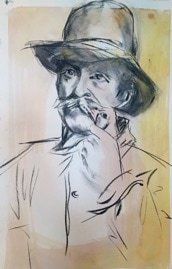
Prentice Mulford (1834-1891) was born in Sag Harbor in 1834. He was a noted literary humorist and author whose philosophies, along with those of contemporaries such as Ralph Waldo Emerson, helped found the New Thought movement. He is credited with coining the term “Law of Attraction”. When he was 22 years old, he moved to San Francisco and worked as an essayist and lecturer. In 1856, his writings began to focus more on mental and spiritual phenomena, and he moved onto an old whaleboat that cruised around San Francisco Bay. His disregard for money caused him to be known as a “bohemian”. He was celebrated for his humorous style of writing and vivid descriptions of life at sea. In 1891, at the age of 57, Mulford decided to return to Sag Harbor to write about Long Island after the Gold Rush, but he passed away peacefully and alone in his boat. Mulford’s writings became extremely popular in Germany where many of his books were translated and revered, including 150,000 prints of his essay collection entitled “Der Unfug des Sterbens” (translation: The Mischief of Dying). After 30 years in an unmarked grave, Mulford‘s body was taken to Oakland Cemetery in Sag Harbor where a large stone was placed with the simple title of his most well known work, "Thoughts are Things“.
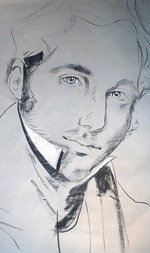
A member of the fabled whaling clan for whom Havens Beach is named, Captain Wickham Havens (1806-circa 1865) enjoyed a career spanning three decades during which he commanded the vessels “Massachusetts,” “Augustus,” and “Niagara.” He was later described by a descendant as “A true man, a taut man,/ With sea-blue eyes and bright,/ Tree foot across the shoulders/ And five foot five in height.” But those poetic lines hardly do justice to a dashing figure whose handsome profile and faraway eyes beg comparisons to later day movie stars.
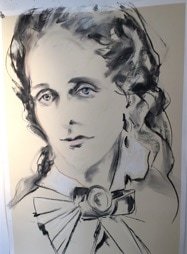
Eliza Azelia Griswold Williams (1826-1885 of Wethersfield, Conneticut was thirty two years old and five months pregnant when she accompanied her husband, Captain Thomas W. Williams, aboard the Florida in 1858. She made a total of six voyages, bearing three children at sea and surviving two shipwrecks.
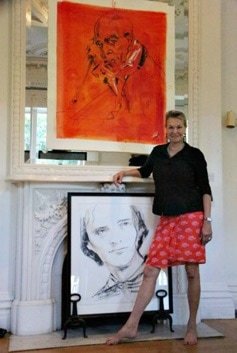
More work from Sabina Streeter can be found on the artists’ website:
Sabina Streeter is a contemporary artist who draws with a passionate ecumenical vision that transcends political, social, and economic boundaries. As Alanna Heiss, the director of P.S. 1 Contemporary Art Center observes, "Sabina's work has a unique conceptual content and an aura of cool detachment that is ironic without being jaded or exaggerated. If I had to choose one living artist to distill my likeness on canvas, it would be her."
Ms. Streeter specializes in individual and small group portraits whose form and content are inspired by a classical tradition reinterpreted through her own eclectic experience. She enlarges reality, then cuts to the emotional quick with an unblinking clarity of detail that dramatizes issues of craft, class, popular culture, and universal longing. Her extraordinarily diverse subjects have included American bluebloods, European aristocrats, filmmakers, high school students, socialites, musicians, artists, and historic figures.
